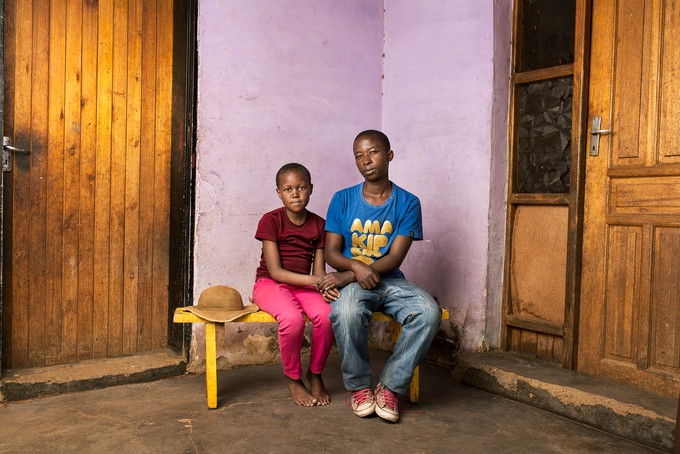Sick miners to get up to R500k
Historic settlement reached in silicosis case

On Wednesday the Legal Resources Centre, Abrahams Kiewitz Inc and Richard Spoor Attorneys, on behalf of thousands of mineworkers, reached a historic class action settlement with the Occupational Lung Disease (OLD) Working Group, representing African Rainbow Minerals, Anglo American SA, AngloGold Ashanti, Gold Fields, Harmony, Sibanye Stillwater and Pan African Resources. The settlement will see compensation paid to eligible mine workers who have silicosis or tuberculosis.
This is the first class action settlement of its kind in South Africa and follows three years of extensive negotiations between the representative attorneys and the OLD Working Group.
National Director of the Legal Resources Centre (LRC) Janet Love, said: “This settlement marks the end of a long road for the LRC, starting in 2003 which led to the Blom/President Steyn Mine silicosis litigation. The Blom/President Steyn Mine matter was the first case on silicosis in South Africa. It served as a test case to establish the liability of Anglo American SA as a parent company. It laid the foundation for Mbuyisa Neale and Leigh Day to negotiate the establishment of the Q(h)ubeka Trust in March 2016 and it provided the primary evidentiary basis to launch the class action.”
For details on the Q(h)ubeka Trust established by the Blom/President Steyn Mine settlement, see:
Attorneys for the victims of occupational lung disease have issued joint press releases with the OLD Working Group explaining some of the terms of the settlement. The parties point out that it is still conditional upon widespread consultation with victims of lung disease and their representatives all over the sub-continent, and thereafter approval and registration of the Trust Deed by the South Gauteng High Court in terms of its class action certification judgment, against which there are now no surviving appeals from the mining industry.
The essence of the still-to-be-ratified settlement and Trust Deed is as follows:
There are ten classes of claimants who, once properly certified, will be eligible for a benefit as follows: (Note: ODMWA = Occupational Diseases in Mines and Works Act)
1. Silicosis Class 1: R70,000; This is an early stage of silicosis (lung function impairment of up to 10%) which is not compensable in terms of ODMWA.
2. Silicosis Class 2: R150,000; This is the equivalent of 1st degree silicosis in ODMWA.
3. Silicosis Class 3: R250,000; This is the equivalent of 2nd degree silicosis in ODMWA.
4. Silicosis Class 4 with defined special aggravated medical condition: a special award of up to R500,000. This category provides relief to a small number of claimants who are suffering from extraordinary disease conditions which exceed most other silicotic claimants. There is no equivalent ODMWA compensation category.
5. Dependant of a deceased eligible silicosis claimant who died between March 1965 and the effective date: R100,000, where silicosis is deemed to be the primary cause of death.
6. Dependant of a deceased eligible silicosis claimant who died between 1 January 2008 and terminating on the effective date, where the deceased had the condition referred to in 2 or 3 above: R70,000.
7. First degree tuberculosis. An eligible claimant must: (i) have worked underground at a Working Group mine for two years; and (ii) have been diagnosed with first degree tuberculosis within a year of working at least one shift at a WG mine: R50,000.
8. Second degree tuberculosis (same conditions as 7 above save for second degree diagnosis): R100,000. The tuberculosis diagnoses are in line with Medical Bureau for Occupational Diseases definitions.
9. “Historical” tuberculosis (in absence of medical report determining degree of tuberculosis): An eligible claimant must: (i) have worked at a Working Group mine for two years between 12 March 1965 and 28 February 1994; (ii) have been issued with a tuberculosis certificate (without indicating degree of tuberculosis) within a year of working at least one shift at a WG mine: R10,000 or same condition as (i) and (ii) above but with proof of first degree tuberculosis: R50,000 or second degree tuberculosis: R100,000.
10. Dependant of a deceased tuberculosis claimant where: (i) the deceased worked underground at a Working Group mine for two years; (ii) the deceased died within a year of working at least one shift at a WG mine; and (iii) tuberculosis was the primary cause of the deceased’s death: R100,000.
Guestimates for the numbers of potential beneficiaries (excluding their dependants) have varied over the years of the litigation from 100,000 to 500,000. Academic analysis of the epidemic of occupational lung disease amongst black mineworkers since the 1980s is currently underway, using the millions of records held by TEBA, the inheritor of the colonial-era migrant labour recruitment body for the gold industry set up by the Chamber of Mines in the early part of the 20th century, and other data sources bearing witness to the extent and growth of the epidemic.
South African “white” mineworkers who fell victim to quartz dust in the colonial era were always well-provided for by both the apartheid authorities and the gold industry.
The enormous task of finding victims, medically examining them, and paying them or their dependents lies ahead.
Support independent journalism
Donate using Payfast

Don't miss out on the latest news
We respect your privacy, and promise we won't spam you.
Next: Shack dwellers live in filth in Kraaifontein
Previous: Mitchells Plain and Siqalo residents hold crisis meeting
© 2018 GroundUp.
This article is licensed under a Creative Commons Attribution-NoDerivatives 4.0 International License.
You may republish this article, so long as you credit the authors and GroundUp, and do not change the text. Please include a link back to the original article.
